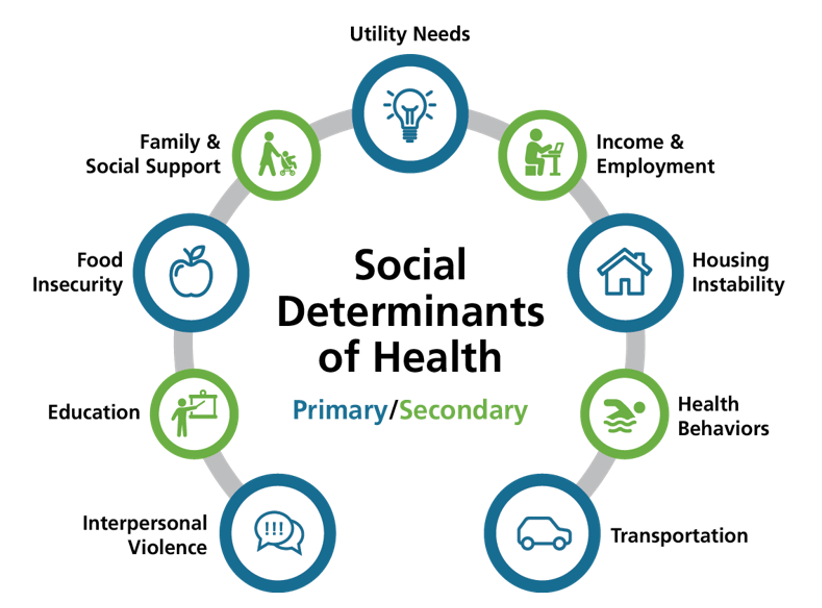Addressing the Social Determinants of Health
Researchers believe social determinants drive more than 80 percent of health outcomes.
Medical care alone is insufficient to improve health. Current methodology only accounts for 10-20 percent of the modifiable contributors to improved health outcomes. The remaining 80 to 90 percent are sometimes broadly referred to as the SDoH, which encompasses health-related behaviors, socioeconomic factors and environmental factors. (source: National Academy of Medicine – SDoH 101
Addressing the social determinants of health will require a comprehensive effort among community partners (see figure 1). The eTransX Wellbeing Care Coordination system has built in modules, assessments, and success pathways. These strategies help address the social determinants from the community level down to the individual/household level.
Effective screening to identify needs and the ability to then immediately connect, enroll, and guide individuals to a broad array of services and programs is paramount to not only personal success, but also making full use of a region’s investments in existing services and solutions. Wellbeing Care Community unites medical, behavioral, and social service providers on a true operational level with community services and programs like never before.
Better Health Outcomes
WCC allows providers to build and manage personalized success pathways to address the social determinants of health, preventative health, chronic disease management, and mental health. This includes managing and tracking referrals and engaging with friends, family, community health workers, and other personal support network members. WCC provides a broader and deeper focus that improves both short and long-term personal health outcomes.

Figure 1 – Source: The Alliance for the Determinants of Health, Intermountain Health Utah, 2020
